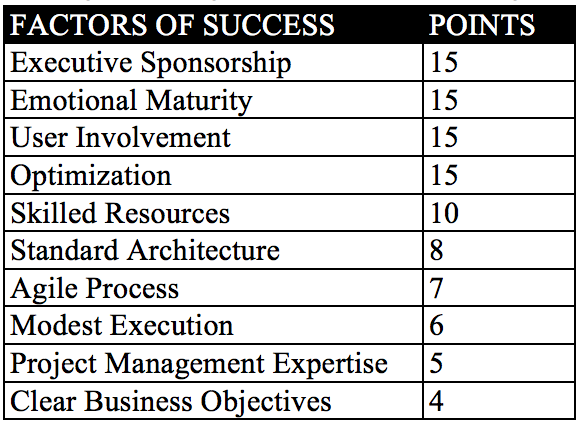One of the best international references analysing software projects success is the CHAOS reports of the Standish Group (www.standishgroup.com). These CHAOS reports have been published since 1994 and are a snapshot of the state of the software development industry. The report contains an analysis of more than 50,000 projects, between 2011 and 2015, around the world, from very small projects to large systems implementation projects.
The 2015 report agrees with reports from previous years in concluding that small projects have more chances of success than large projects (62% versus less than 10% respectively). It also concludes that more complex projects are more likely to fail than less complex ones.

Finally, it analyses the reasons why the projects have these results:

Nevertheless, we can say that implementing improvement actions in a small organizations following ISO/IEC 29110 profiles will positively influence several of these success factors of software projects: not only directly to the standardized architecture factor referring to the use of standard processes in the organization, but indirectly to other factors like, for example, Executive Sponsorship as the fact of willing to improve towards standard processes following the best practices requires having direct support from the management of the organization. It is also influencing the optimization factor that deals with improving business effectiveness and optimizing a collection of many small projects or major requirements. And also the use of an international standard greatly facilitates the user involvement giving that they can, if not use, know the way the project are developed and managed in order to adapt their own process and better communicate.